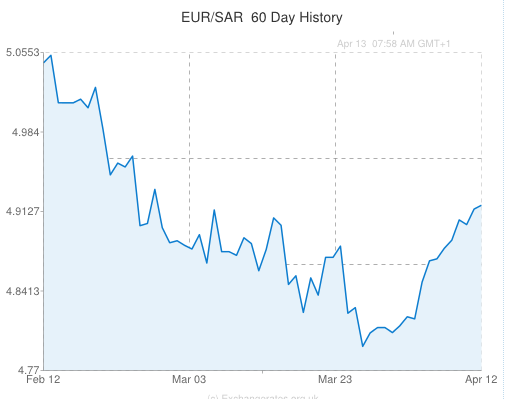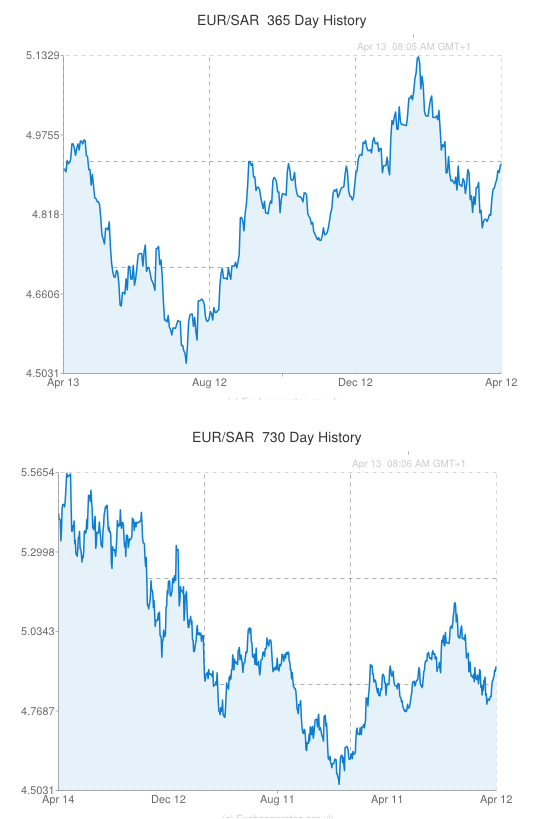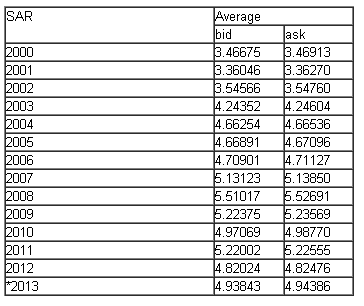Introduction
The leading sector in exports to Saudi Arabia from Spain comes from industrial technology. In 2012, the total exports in the industrial sector amounted to USD 527.701 million (Ranking of Leading Sectors Exported by Spain to Saudi Arabia, 2012). In February 2013, Mafex sent a delegation to Saudi Arabia to strengthen trade relations with Saudi Arabia that will increase exports on railway technology (Spain Abroad, 2013). It will include multiple sectors such as engineering, processing, and railway equipment. SAR3.04billion ($811 million) loan has been allocated towards the project to build a high-speed railway line between Makkah and Madina (Spanish-Saudi rail group gets $811 loan, 2012).
Spain’s total export of services to Saudi Arabia in 2009 “amounted to about USD720 million” (OECD, 2012 p. 132).
Spain export of services to Saudi Arabia
The mode of entry is a combination of turnkey and direct export (Johnson & Turner, 2003). Turnkey involves an MNC designing and completing a project then handing it over to the local government when the country has gained the expertise to run it. Direct export will include equipment and services used to complete the project. Mafex is an association of companies that operate in Spain in the railway industry.
The company will be involved with contracting services at the local level where it will use local currency to pay workers. Skilled labor will include engineers and consultants from Spain. Saudi Arabia makes a payment using Saudi Riyal but Mafex uses a combination of Euros and Saudi Riyal.
Turnkey mode of entry has the advantage of using extra labor that would have been under-employed in the home country. Most railway construction work in Spain has been completed. It may only require maintenance. MNCs under Mafex may have the advantage of receiving subsidies at home to encourage exports. Mafex will benefit from having a technological advantage over Saudi Arabia (MacDonald & Burton, 2002). Direct exports require less capital. It favors existing when the project is completed. Railway construction involves using the great size of steel. It may require MCNs to partner with local manufacturing firms to lower the cost of transporting the steel.
Business opportunities include a wide range of railway line components and equipment such as Train signaling and controlling system. The MNC under consideration is Invensys Rail Dimetronic which is the leading railway signaling and control system manufacturer, supplier, and installer (Invensys Rail Dimetronic, 2011).
Factors that may affect international trade
Saudi Arabia applies different levels of tariffs for different types of imported goods. Most imported products are under the 5% tariff which adheres to the Gulf Cooperation Council (GCC) requirement. Textiles and clothing are charged a 12% tariff. Technological items such as aircraft are imported duty-free. Aluminum bars and rods are charged a 15% tariff (Saudi Arabia, n.d). Companies under Mafex will reduce costs if they manufacture steel in Saudi Arabia rather than an import. On the other hand, Invensys Rail Dimetronic will export signals and control systems duty-free. Importation of wireless equipment falls under the group of products that require special approval before they are imported.
MNCs operating under the turnkey mode are required to offer 30% of the services contracts to firms that consist mainly of Saudi nationals. MNCs are exempted from this obligation if the required expertise is not available in Saudi Arabia. A 10% preference is issued to products that are manufactured in the GCC region countries (Saudi Arabia, n.d). The MNCs may be required to train Saudi Arabia nationals to perform certain tasks in the project which may prolong the duration of the project.
Companies operating directly with the government are required to open an office in Saudi Arabia and meet registration requirements within 30 days after signing the contract (Kirk, 2011). There are delays in the registration process. A license is necessary to operate in Saudi Arabia. Companies may choose to operate through a local agent.
The country has limitations on the practice of certain professions. The engineering sector may require partnerships with Saudi nationals before MNCs are allowed to operate in the country (Trade Barriers in Saudi Arabia, 2010). A foreign partner is required to invest a minimum amount of USD 5.3 million (SAR 20 million). Saudi Arabia has made improvements in administering intellectual property rights.
The Foreign Exchange Market
Saudi Arabia’s (SAR) against Euro (EUR)
Exchange rate risk refers to the extent that cash flows may be affected by fluctuations in the foreign exchange market (Papaioannou, 2009). MNCs are concerned about a reduction in the expected income as a result of the depreciation of the Saudi Riyal. The transaction risk that Invensys Rail Dimetronic may face involves receivables and payables. The receivables are revenues that it receives in SAR from trading with Saudi Arabia.
Payables refer to payments made to contracted firms owned by Saudi nationals. Translation risk involves the balancing of assets against liabilities. When SAR depreciates, it reduces the liabilities of the MNC if they are measured in SAR. Assets will also decline if measured in SAR. Invensys Rail Dimetronic operations in Saudi are affected less by transaction risk because it does not own a manufacturing plant in Saudi Arabia. Economic risk is increased because Saudi Riyal appears to depreciate gradually against the Euro.
The Spaniards use the Euro at home. The Euro exchange rate is volatile against the Saudi Riyal but stable against the dollar. The highest on 180 days was on 2 Feb 2013 when EUR 1 was exchanged for SAR 5.1303. The lowest was on 12 Nov 2012 when the EUR 1was exchanged for SAR 4.7663 (Exchange Rates UK, 2013). It indicates a margin of about SAR 0.5. A stronger SAR makes it more costly for the MNCs to make payments to Saudi Arabian nationals if they convert EUR to SAR for the payables. The regulations require that about 30% of service work be contracted to Saudi nationals (Kirk, 2011). At least a third of the expenditure will involve expenses in SAR.
Graphs on the exchange for the Euro against SR (Exchange Rates UK, 2013)




The annual averages indicate that the SAR has been depreciating against the EUR. Long-term depreciation averages may have little influence on MNC’s exposure to exchange risk if payables and receivables occur every month. However, long-term stability influences the level of public confidence which affects short-term exchange rates. The graphs indicate that large margins are unlikely on the exchange rate over a short period. Using the 60-day-graph between 12 February 2013 and 12 April 2013 indicates that changes within a month rarely exceed a margin of 0.214 SAR within a month. In the quarterly period, the variation could be as large as 0.4724 as it can be seen in the 365-days-graph between April (about 4.9755) and August 2012 (about 4.5031).
Using market derivatives to hedge against exchange rate risk
Forward contracts and futures
A forward contract locks the exchange rate at a future rate. The MNC would receive EUR 10 million if the exchange rate is constant or hedged. It would receive a lesser or higher amount when exposed to exchange rate risk. Assuming the future exchange rate SAR depreciates against the Euro from 4.94386 to 5.23569. The MNC and a bank in Saudi Arabia had agreed upon the value of 4.82476 as the locked exchange rate in the next thirty days. From the current exchange rate, the MNC was expecting SAR 49,438,600.
With hedging
- The receivable amount in Euros = amount in SAR/forward rate
- The receivable amount in Euros with hedging = 49,438,600/4.82476
- The receivable amount in Euros with hedging = EUR 10,246,851.66
Without hedging
- The receivable amount in Euros without hedging = 49,438,600/5.23569
- The receivable amount in Euros without hedging = EUR 9,442,614.05
Hedging using the money market
The company has the option of borrowing from a bank in Saudi Arabia in SAR at a 4.5% interest rate. The MNC converts the money to the EUR and invests in a financial institution in Spain that offers a 6% interest rate. The MNC is likely to gain against the depreciation of the SAR and interest on EUR.
Borrowing amount worth EUR 10m in the current period St = 4.94386 * 10m = SAR 49,438,600.
Amount plus interest on debt = SAR 49,438,600 * [0.045] * 30/360 + 49,438,600
Amount plus interest on debt = SAR 49,623,994.75
Amount plus interest on deposits = EUR 10m * [0.06] * 30/360 + 10m = EUR10,833,333. 33. It is higher compared with 10,246,851.66 available on the forwards option.
Using market prices of 5.23569 for 1EUR, the company can buy SAR and settle the loan. The total amount after conversion is 56,719,974.98. It is greater than the number of debts which is 49,438,600. The difference is 7,281,374.98. Compared to the gains on forwards and futures, it has a larger value.
Hedging against payables
St, EUR 2 million = 2m * 4.94386 = SAR 9,887,720
Ft, EUR 2 million = 2m * 4.24604 = SAR 8,492,080.
Using money markets
Using money markets, the MNC borrows from a bank in Spain that offers EUR at an interest rate of 6%. The borrowing happens 30 days before the payment date. The MNC converts the EUR to SAR and keeps them in a bank that pays 4%. The money earns interest for 30 days. The MNC has to consider whether the interest gained on this option is more than the appreciation of the SAR against the EUR.
Converting the EUR 2m into SAR, St = 2m * 4.94386 = SAR 9,887,720
Amount plus Interest gained on SAR = 9,887,720 * ([0.04] * (30/360)) + 9,887,720 = SAR 9,920,679.067
Amount (debt) plus interest gained on EUR = (2m * [0.06] * (30/360)) + 2m = EUR 2,010,000
The EUR 2,010,000 is converted to SAR to compare gains and loses. The figure is compared with Ft (4.24604) to obtain the amount gained or lost.
EUR 2,010,000 = 2,010,000 * 4.24604 = SAR 8,534,540.4
From these calculations, the MNC can borrow in Euros at a higher interest rate and still manage to hedge against foreign exchange risk.
Comparing the two methods
Money markets: EUR 2,010,000 (debt) = 2,010,000 * 4.24604 = SAR 8,534,540.4
Amount plus Interest gained on SAR = SAR 9,920,679.067
The difference = SAR 1,386,138.67
Forwards: St, EUR 2 million = 2m * 4.94386 = SAR 9,887,720
Ft, EUR 2 million = 2m * 4.24604 = SAR 8,492,080
The difference = 1,395,640
The forward’s option has higher gains than money markets. Money markets could be lower or higher depending on the market exchange rate at the moment. In this case, the money market option has used the same rate as the forwards option locked rate. Forwards present the best options for payables when exchange rates are expected to appreciate and the rate of interest between the countries has a small difference.
Summary and Conclusion
MNCs seeking to operate in Saudi Arabia have to be registered within 30 days after signing the contract (Kirk 2011). Companies operating under the turnkey mode have to ensure that 30% of the service contracts are issued to Saudi nationals or firms owned by Saudi nationals. Requirements for training local people to join in the construction process may slow down the completion of the project.
Companies under Mafex that will be involved in the production of steel bars may find it cheaper to manufacture in Saudi Arabia. Importing steel bars may meet a 15% tariff rate. On the other hand, Invensys Rail Dimentronic which deals in rail control and signaling systems may export its products to Saudi Arabia duty-free. It may be required to seek special approval on importing wireless equipment. It is considered a sensitive issue in Saudi Arabia. Invensys Rail Dimentronic may prolong its operations in Saudi Arabia than other companies. Its products and services are needed even after the project has been completed. It can win contracts for maintenance and supply of control and signaling systems.
The MNC requires hedging against fluctuations in the exchange rate. The SAR is more volatile against the EUR compared to the USD. When hedging against receivables, the money market offers a better option than forwarding contracts. On the other hand, the best option for hedging against payables is the forward contract. The MNCs are more exposed to exchange rate risk if it operates longer in Saudi Arabia than when it operates for a short period. The variations within a month rarely exceed 0.214 SAR. Every quarter, the variations in the exchange rate may be about 0.45 SAR. The longer a company expects to wait for receivables and payables, the more it requires hedging against risk. The yearly averages indicate that the EUR has been appreciating gradually against the SAR.
Reference List
Average Exchange Rates. (2013). Web.
Exchange Rates UK. (2013). Web.
Invensys Rail Dimetronic. (2011). Web.
Johnson, D. & Turner, C. (2003). International Business: Themes and Issues in the Modern Global Economy. New York, USA: Routledge.
Kirk, R. (2011). National Trade Estimate Report on Foreign Trade Barriers (25th Ed.). Darby, USA: DIANE Publishing.
MacDonald, F. & Burton, F. (2002). International Business. London, UK: Thomson Learning.
OECD. (2012). OECD Statistics on International Trade in Services 2011: Volume II, Detailed Tables by Partner Country. OECD Publishing.
Papaioannou, M. (2009). Exchange Rate Risk Measurement and Management: Issues and Approaches for Firms. Issues 2006-2255, WP/06/225. IMF.
Ranking of Leading Sectors Exported by Spain to Saudi Arabia. (2012). Web.
Saudi Arabia. (n.d). Web.
Spain Abroad. (2013). Web.
Spanish-Saudi rail group gets $811 loan. (2012). Web.
Trade Barriers in Saudi Arabia. (2010). Web.